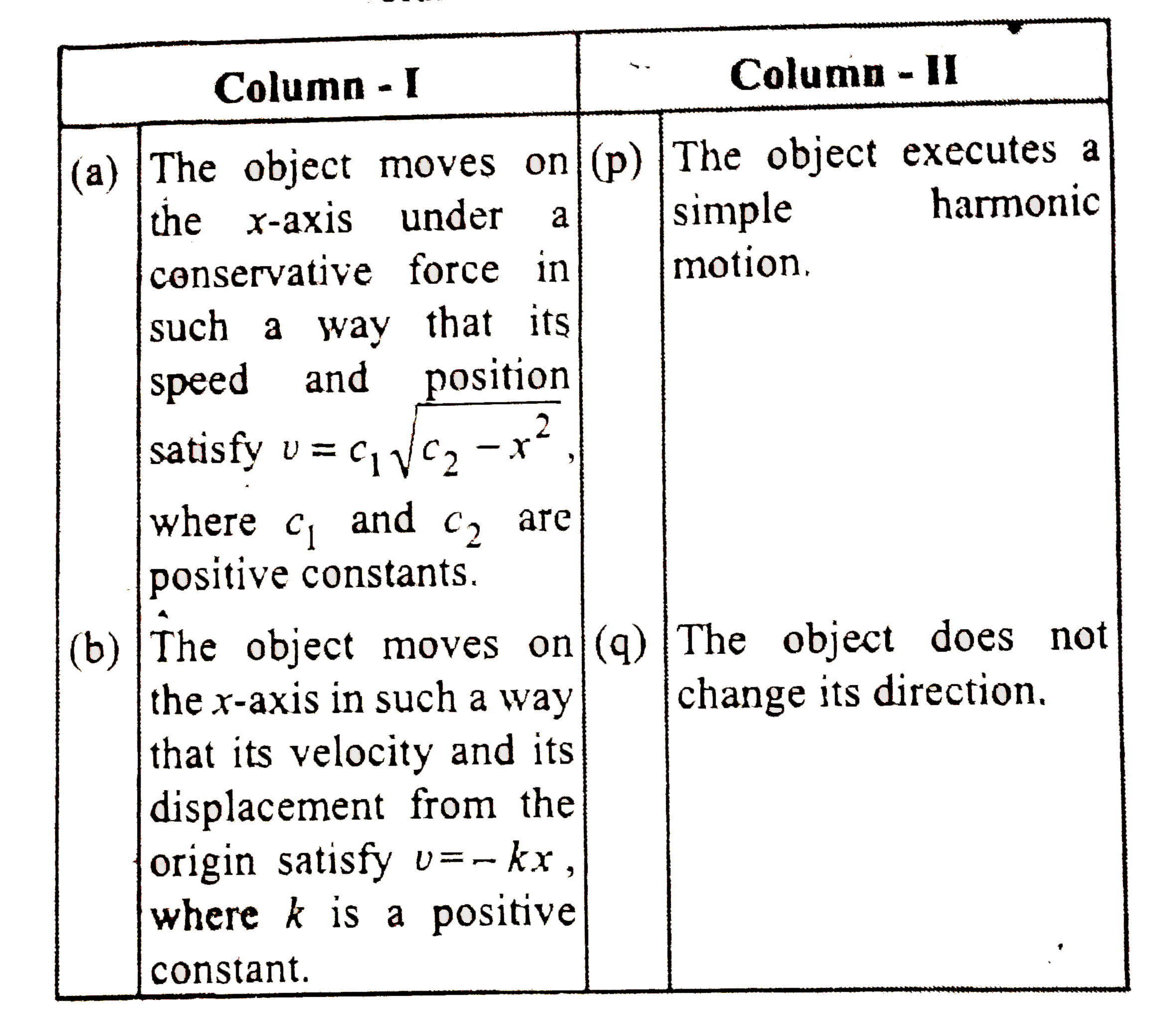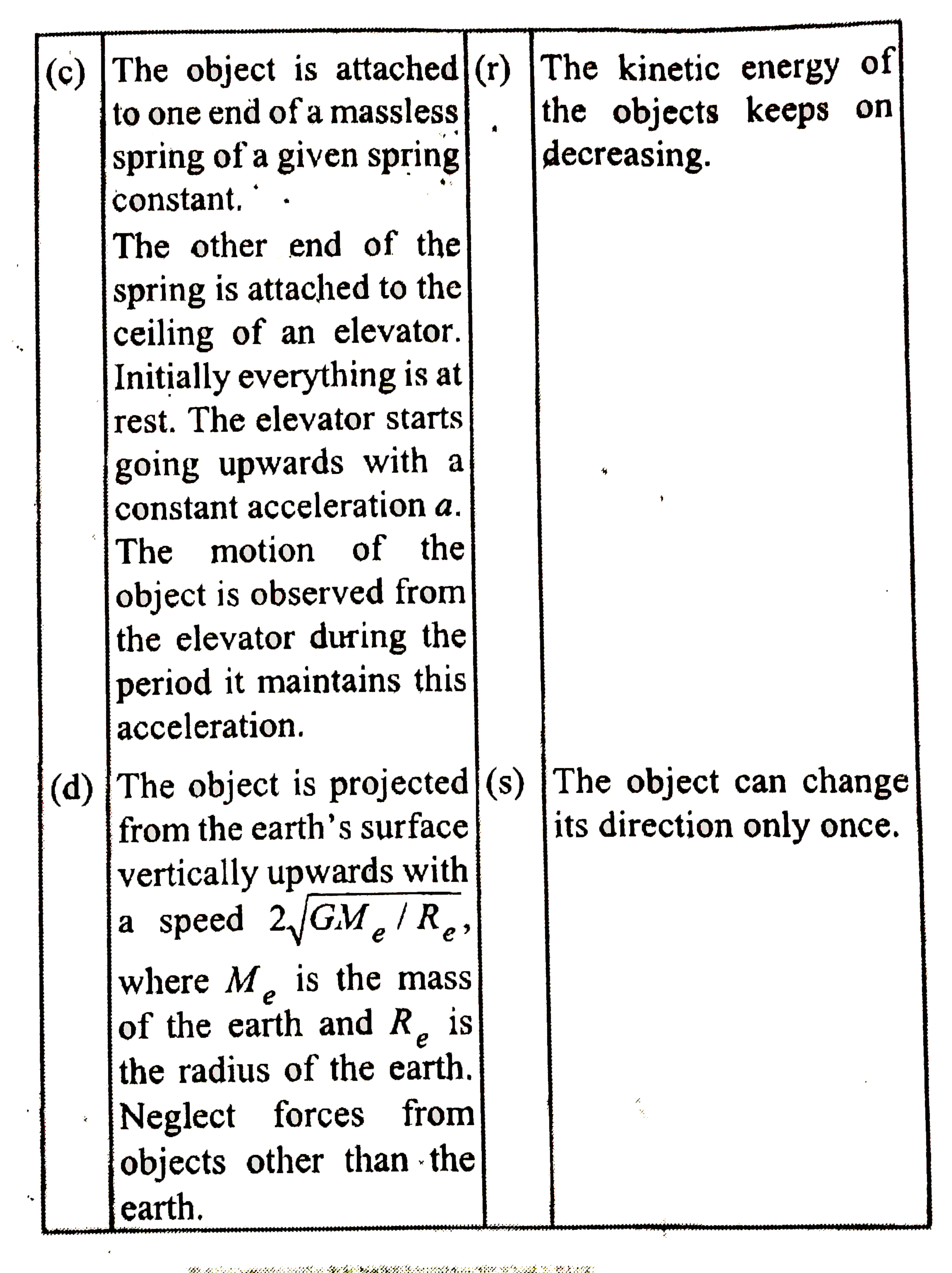A pair of stars rotates about a common centre of mass. One of the stars has a mass M and the other has mass m such that =2m. The distance between the centres of the stars is d ( d being large compare to the size of eithe star).
The ratio of the kinetic energies of the two stars (Km/KM)
1
2
4
9
The correct Answer is:B
Step by step video solution for A pair of stars rotates about a common centre of mass. One of the stars has a mass M and the other has mass m such that =2m. The distance between the centres of the stars is d ( d being large compare to the size of eithe star). The ratio of the kinetic energies of the two stars (K_(m)//K_(M)) by Physics experts to help you in doubts & scoring excellent marks in Class 12 exams.
Updated on:21/07/2023Topper's Solved these Questions
- GRAVITATIONBOOK - RESONANCE ENGLISHCHAPTER - GRAVITATIONEXERCISE - EXERCISE-3 PART-1
15 Videos
- GRAVITATIONBOOK - RESONANCE ENGLISHCHAPTER - GRAVITATIONEXERCISE - EXERCISE-3 PART-2
11 Videos
- GRAVITATIONBOOK - RESONANCE ENGLISHCHAPTER - GRAVITATIONEXERCISE - EXERCISE-2 PART-3
12 Videos
- GEOMATRICAL OPTICS BOOK - RESONANCE ENGLISHCHAPTER - GEOMATRICAL OPTICS EXERCISE - Advance level Problems
33 Videos
- NUCLEAR PHYSICSBOOK - RESONANCE ENGLISHCHAPTER - NUCLEAR PHYSICSEXERCISE - Advanced level solutions
16 Videos
Similar Questions
Column I describes some situations in which a small object moves. Column II describes some characteristics of these motion. Match the situtions in column I with the characteristics in column II.


View SolutionIf gE and gM are the acceleration due to gravity on the surfaces of the earth and the moon respectively and if Millikan's oil drop experiment could be performed on the two surfaces, one will find the ratio
electronic charge on the moon/electronic charge on the earth to be
View SolutionFor a satellite to apper satationery to an observer on earth.
View SolutionA U-shaped wire is placed before a concave having radius of curvature 20 cm as shown (18-E1). Find the total length of the image.

View SolutionA radioactive element decays by β−emission. A detector records n beta particles in 2s and in next 2s it records 0.75n beta particles. Find mean life correct to nearest whole number. Given ln |2|=0.6931, ln |3|=1.0986.
View SolutionIn a double star, two stars (one of mass m and the other of mass 2m) distance d apart rotate about their common centre of mass., Deduce an expressioin for the period of revolution. Show that te ratio of their angular momenta about the centre of mass is the same as the ratio of their kinetic energies.
View SolutionA pair of stars rotates about a common centre of mass. One of the stars has a mass M and the other m . Their centres are a distance d apart, d being large compared to the size of either star. Derive an expression for the period of revolution of the stars about their common centre of mass. Compare their angular momenta and kinetic energies.
View SolutionIn a binary star system one star has thrice the mass of other. The stars rotate about their common centre of mass then :
View SolutionA pair of stars rotates about a common centre of mass. One of the stars has a mass M which is twice as large as the mass m of the other. Their centres are a distance apart, d being compared to the size of either star.
(a) Derive an expression for the period of rotation of the stars about their common centre of mass in terms of d, m, G.
(b) Compare the angular momentum of the two stars about their common centre of mass by calculating the ratio Lm/LM.
(c ) Compare the kinetic energies of the two stars by calculating th eratio Km/KM.
View SolutionA pair of stars rotates about their centre of mass One of the stars has a mass M and the other has mass m such that M=2m The distance between the centres of the stars is d (d being large compared to the size of either star) .
The period of rotation of the stars about their common centre of mass (in time of d ,m ,G) is .
View SolutionA pair of stars rotates about their centre of mass One of the stars has a mass M and the other has mass m such that M =2m The distance between the centres of the stars is d (d being large compared to the size of either star) . The period of rotation of the stars about their common centre of mass (in time of d ,m ,G) is .
View SolutionA pair of stars rotates about their centre of mass One of the stars has a mass M and the other has mass m such that M =2m The distance between the centres of the stars is d (d being large compared to the size of either star) . The ratio of the angular momentum of the two stars about their common centre of mass (L_(m)//L_(m)) is .
View SolutionA pair of stars rotates about their centre of mass One of the stars has a mass M and the other has mass m such that M =2m The distance between the centres of the stars is d (d being large compared to the size of either star) . The ratio of kinetic energies of the two stars (K_(m) //K_(M)) is .
View SolutionA binary star system consists of two stars. One star has twice the mass of the other. The star rotates about their common centre of mass. Which of the following statement is correct?
View SolutionIn a double star system two stars of masses m1 and m2 seperated by a distance .d. rotates about their centre of mass. Then the common angular velocity and time period is
View SolutionA double star is a system of two stars rotating about their centre of mass only under their mutual gravitational attraction. Let the stars have masses m and 2m and let their separation be 1. Their time period of rotation about their centre of mass will be proportional to (a) 1^(3//2) , (b)a , (c) m ,(d) m^(-1//2)
View Solution

